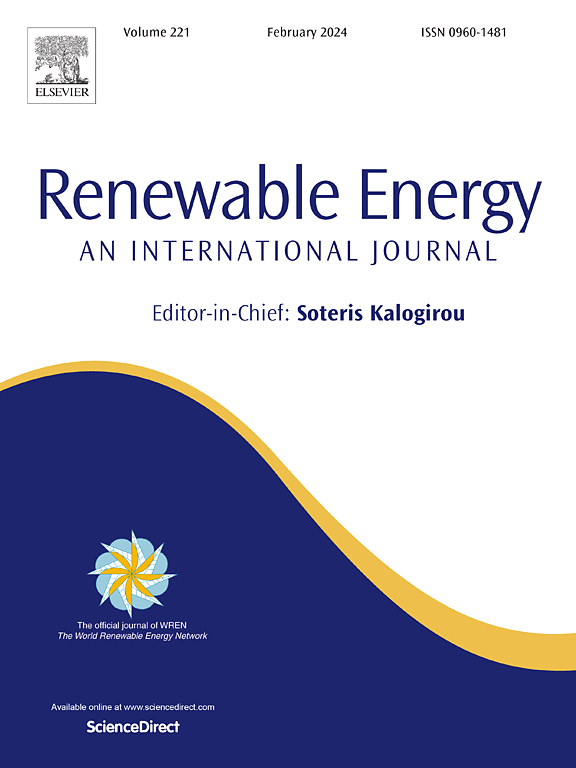微波加热活化蒸汽重整反应中间体抑制结焦
IF 9
1区 工程技术
Q1 ENERGY & FUELS
引用次数: 0
摘要
蒸汽重整过程中的微波加热可以选择性地搅动具有极性官能团的反应中间体,包括焦炭的前驱体,从而影响焦炭的焦化倾向和焦炭的性质。在这里,以Ni/Mg-Al-LDH为催化剂,在300-600°C的微波加热和炉加热下,对乙酸、甘油、甲苯和愈创木酚进行SR,验证了这一点。结果表明,微波加热通过增强反应中间体及其碰撞反应的调动性来提高催化活性。这加速了含碳中间体与蒸汽的气化,在所有反应物的SR中形成更少的焦炭。其中,微波热解甲苯的焦炭仅为炉内热解焦炭的65%左右,而愈创木酚SR中微波与炉内热解焦炭的比例甚至达到54%左右。微波加热对含碳物质的气化作用增强,也会在焦炭中形成脂肪族结构。一般来说,微波加热后的焦炭芳香度高,碳氢比明显高于普通炉加热后的焦炭,焦炭结构更加无序。在微波加热的乙酸SR中,反应中间体对碳纳米管的芳构化增强,而炉内加热的焦炭呈高度非晶态。来自甲苯的丰富碳氢化合物中间体和来自甘油或愈创木酚的富氧中间体形成了表面光滑或粗糙的纳米管状焦炭。本文章由计算机程序翻译,如有差异,请以英文原文为准。

Activating reaction intermediates in steam reforming with microwave heating for suppressing coke formation
Microwave heating in steam reforming (SR) could selectively agitate reaction intermediates with polar functionalities including precursors of coke, which might affect tendency of coking and properties of coke. This was verified here by conducting SR of acetic acid, glycerol, toluene, and guaiacol with microwave heating and furnace heating at 300–600 °C with Ni/Mg-Al-LDH as a catalyst. The results showed that microwave heating promoted catalytic activity via enhancing mobilizing reaction intermediates and their collision/reactions. This accelerated gasification of carbonaceous intermediates with steam, forming less coke in SR of all the reactants. Specifically, coke from SR of toluene with microwave heating was only ca. 65 % of that from furnace heating, while the ratio of coke formed from microwave heating to furnace heating in SR of guaiacol even reached ca. 54 %. Enhanced gasification of carbonaceous species with microwave heating also formed aliphatic structures in coke. Generally, the coke from microwave heating was very aromatic with significantly higher C/H ratio and more disordered structures than that from furnace heating. Enhanced aromatization of reaction intermediates to carbon nanotubes was observed in SR of acetic acid with microwave heating, while the coke from furnace heating was highly amorphous. Abundant hydrocarbon intermediates from toluene and oxygen-rich intermediates from glycerol or guaiacol formed nanotube-form coke of smooth or rough surfaces.
求助全文
通过发布文献求助,成功后即可免费获取论文全文。
去求助
来源期刊

Renewable Energy
工程技术-能源与燃料
CiteScore
18.40
自引率
9.20%
发文量
1955
审稿时长
6.6 months
期刊介绍:
Renewable Energy journal is dedicated to advancing knowledge and disseminating insights on various topics and technologies within renewable energy systems and components. Our mission is to support researchers, engineers, economists, manufacturers, NGOs, associations, and societies in staying updated on new developments in their respective fields and applying alternative energy solutions to current practices.
As an international, multidisciplinary journal in renewable energy engineering and research, we strive to be a premier peer-reviewed platform and a trusted source of original research and reviews in the field of renewable energy. Join us in our endeavor to drive innovation and progress in sustainable energy solutions.
 求助内容:
求助内容: 应助结果提醒方式:
应助结果提醒方式:


